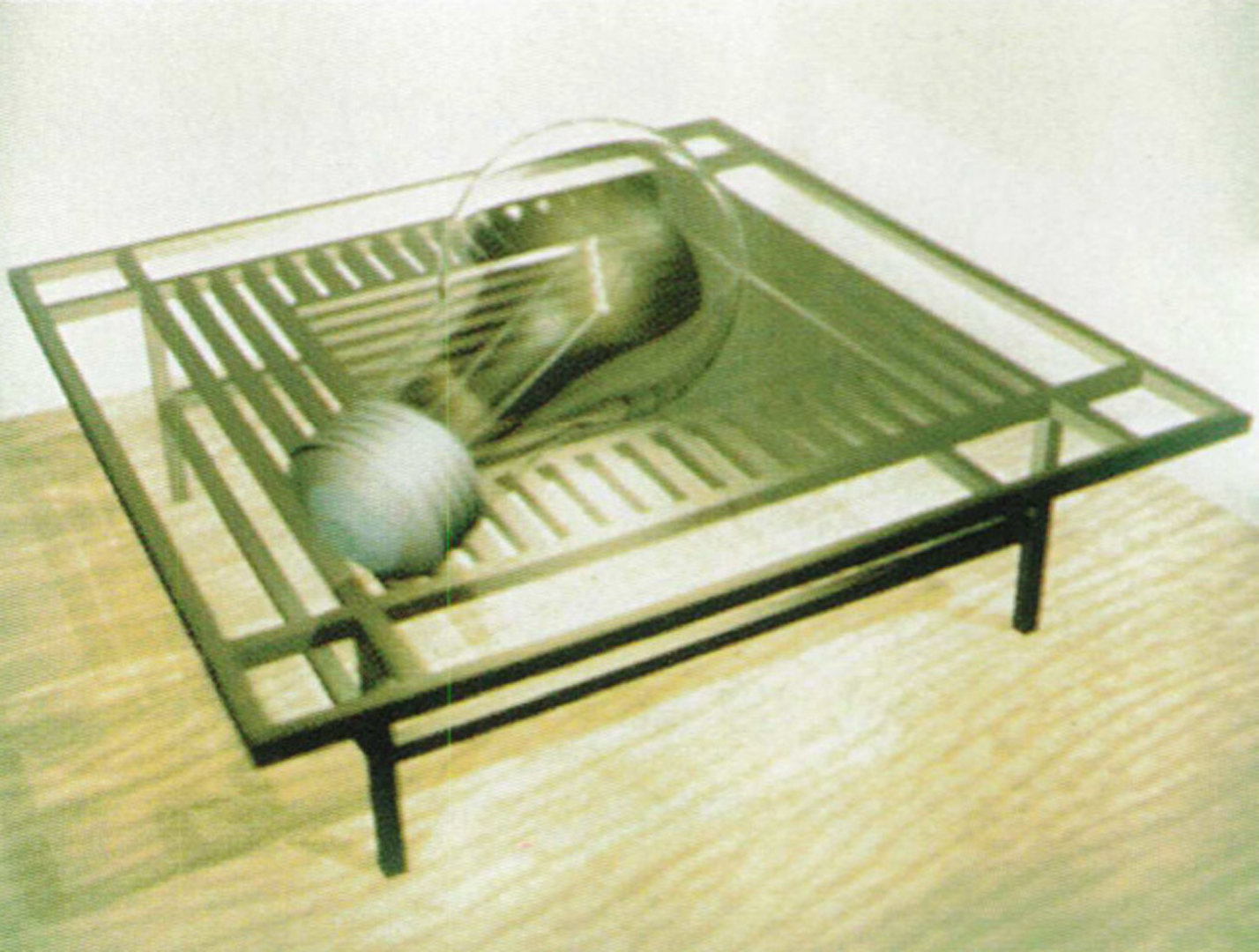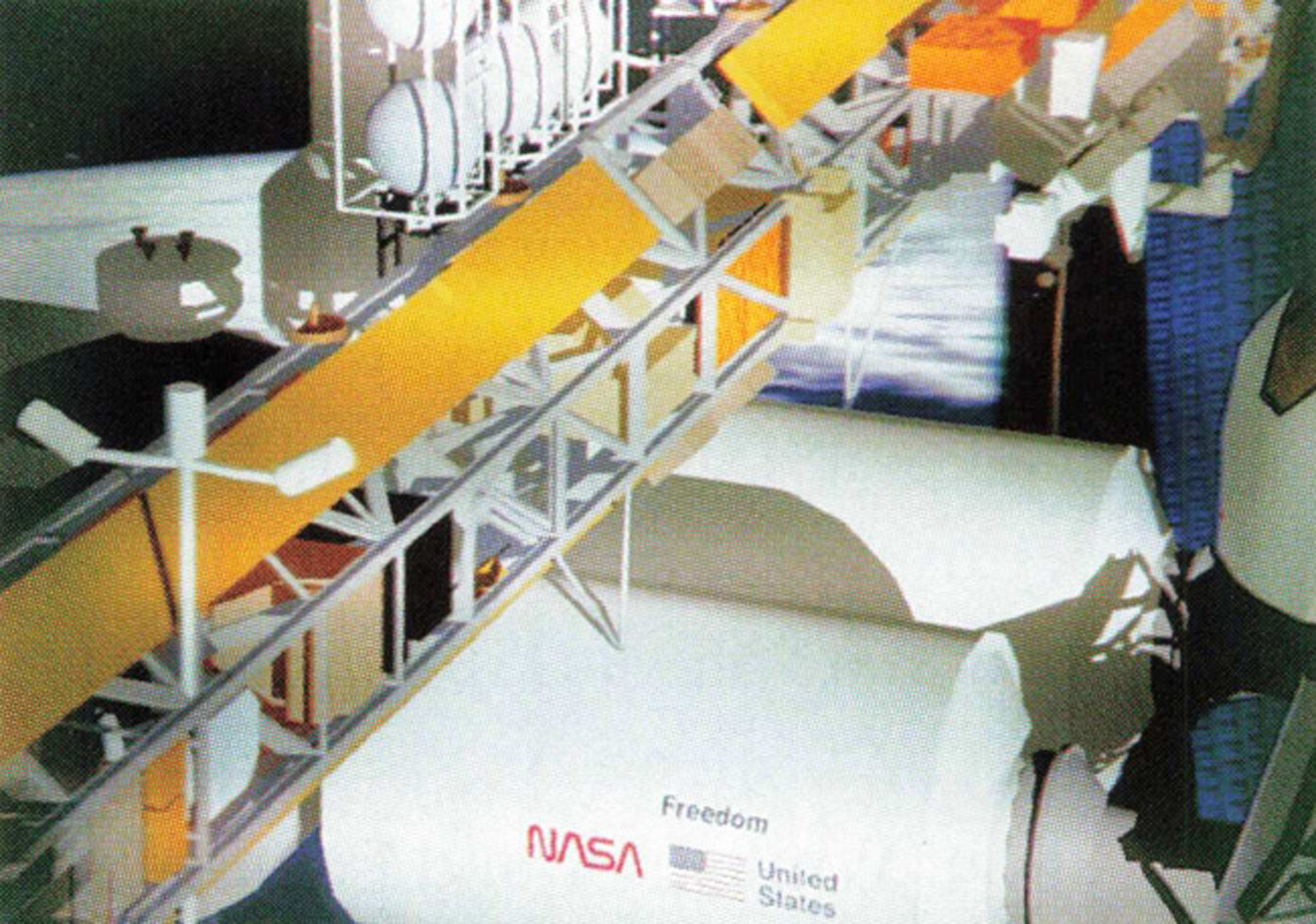“Virtual Table with Lamp” by Sandor
Conference:
Experience Type(s):
Entry Number: 51
Title:
- Virtual Table with Lamp
Program Title:
- Tomorrow's Realities
Organizer(s)/Presenter(s):
Collaborator(s):
Project Affiliation:
- (art)n
Description:
Computer graphics has revolutionized new ways of thinking, creating, and communicating. An entire industry has evolved around digital 30 imaging, replacing the traditional tools used in science, engineering, architecture, design, and other fields. The advantages of 3D computer graphics enable a scientist, for example, to visualize a group of atoms, an engineer to study simulations of the stress on a bridge design, and product developers to view their prototypes without the time-consuming creation of physical models.
While 3D computer graphics tools have many advantages, there is one unique problem that hasn’t quite been resolved. Short of a finished product, how can professionals present their work without losing the effects achieved by 3D software?
Animation, 2D black-and-white or color prints, stereo slides, stereolithography, and computer-generated holograms are options, though animation and prints are limited to representing imagery in two dimensions while stereo slides require cumbersome glasses for viewing. Stereolithography and holography are also limited in supporting realistic color.
There is however, a new alternative called PHSColograms (pronounced skolo- grams). PHSColograms are 3D back-lit images that are created directly from digital data, and can be viewed without glasses, or other 3D viewing devices. They have full color and high resolution. This newly-patented technology is the product of (Art)” Laboratory, a Chicago-based collaborative art group based at the Illinois Institute of Technology, founded in 1983 by sculptress Ellen Sandor. The first PHSColograms produced by Sandor and her crew were created by an optical photographic process, producing 3D images of sculptures with a room-sized camera.
On the technical side, our process is quite simple. A series of images is created, each showing a very slightly different view of the same 3D scene. We use 13 images, since it is a good trade-off for a number of different criteria, but other numbers (at least three) are acceptable.
The images are broken up into vertical scanlines, (similar to the horizontal scanlines comprising a television picture), and interleaved (similar to shuffling a deck of cards). We start with the first scanline from the first image, then the first line from the second image, and so on, for all 13 images. We then continue with the second line from the first image, and all of the second lines in order, then all of the third lines, and so on, for all of the lines in all the images. The process creates a single image that is output on a Crosfield scanner or full-color device, such as the Kodak LVT, Premier, or Iris printer. To the naked eye, this image seems blurry, as if the 13 images had been simply blended together.
This “blurry” image is then laminated onto the back face of a piece of Plexiglas, or in the case of our high-resolution images, a very thin piece of Mylar. Onto the front, we laminate a linescreen (barrier-screen), an image comprised of black vertical lines with transparent areas between them. This linescreen may be made on the same device as the image, or mass-produced.
When the finished piece is illuminated from behind, as in a lightbox, the black lines block 12 of the 13 images. Depending on where you stand, a different image is visible through the slits. Since your eyes are arranged horizontally in your head, each eye sees a different image, creating the 3D effect. The image is visible from nearly any distance and any angle, appearing to follow the viewer around the room. If rear illumination is impractical, a lenticular may be used in place of a linescreen. Lenticular material is a series of vertical plastic cylindrical lenses that have virtually the same effect as a linescreen. No back lighting is required, but the price for this is paid in a less striking, “plasticky” image, and the added expense of creating suitable lenticular material. This cost of course, becomes insignificant in mass quantities, and we are engaging in research to produce better lenticular material.
Barrier-screen and lenticular images have been produced by photographic means for nearly 100 years, but PHSColograms are created digitally. The difference in quality is like the difference between CD and 8-track; the advance in flexibility is like the difference between Gutenberg’s printing process and a modern laser printer.
The current research focus is to streamline the post-production process. PHSCologram prototypes have been produced using Kodak’s LVT and Premier full color imaging output devices and Scitex’s Iris ink jet printer. The LVT and Premier systems eliminate the darkroom step from the process, and offer a five-fold increase in resolution. While LVT and Premier images cannot be larger than 16 inches by 20 inches, the higher resolution removes the need for 1/4-inch thick Plexiglas. In place, the barrier screen and full color output are laminated to a very thin piece of Mylar. The LVT and Premier prototypes are so thin in contrast to the existing Plexiglas pieces, that they easily clip into the light boxes used in hospitals. One of the LVT experiments was produced from MRI volume visualization data.
Consider a surgeon using virtual reality tools to prepare for surgery. S/he discovers a number of scenes that are significant to the procedure. Several PHSColograms are created to document the surgeon’s discoveries. The finished images are illuminated on the light box in the operating room for the surgeon and his or her team to refer to. After the surgery is performed, the surgeon can use the PHSColograms to review the operation with his or her colleagues. Additional post- operative PHSColograms may also be created to evaluate the patient’s prognosis.
The Scitex Iris printer also offers fullcolor output with ink jet technology. However, Plexiglas is still required. The resolution is not as high as either the Crosfield, LVT or Premier systems, and of course, the issues of color matching with ink are a concern. Nonetheless, the results show that PHSColograms can actually be produced from a printer.
When PHSColograms become easily and inexpensively available, hard copy will never be the same as we know it. Scientists will see complex data directly and be able to easily share it with their colleagues, and doctors may visualize the exact location of a tumor inside of a patient. The
advertising industry is already impatient to see these images in retail environments,
and mass-printing applications for publication are currently being researched.
Space Station Freedom
? 1993/30″x40″ Stealth Negative PHSCologram
? Daniel D. Mazenek, NASA Langley Research Center
? In collaboration with (Art)” Artists: Stephan Meyers & Ellen Sandor
This image documents a close-up of Space Station Freedom with a Space Shuttle docked to it. Freedom is being designed to provide a permanent human presence in space, and will be occupied by an international crew of astronauts and scientists.
The virtual model of Space Station Freedom depicted in this PHSCologram was designed in Wavefront software on a Silicon Graphics 440 TTX at the NASA Langley Research Center. PHSCologram, created by (Art)” at the Electronic Visualization Lab on Silicon Graphics VGX/T and IBM RS/6000 with custom software.
Virtual Bust
? l 993/30″x30″ Stealth Negative PHSCologram
? Brad Maher and Brad deGraf for Ramon Castan
? In collaboration with (Art)” Artists: Stephan Meyers, Ellen Sandor and Janine Fron.
Virtual Bust is a PHSCologram of a character that was designed for the Spanish Pavilion, Expo ’92, Seville, Spain. Roscoe is a three-minute animation produced for laser disk playback. Roscoe is created with Alive, deGraf Associates software, and Silicon Graphics workstations.
Wondrous Spring
? l 993/30″x40″ Stealth Negative PHSCologram
? Charles Csuri, Artist, Ohio State University
? In collaboration with (Art)” Artists: Stephan Meyers and Ellen Sandor
A personal view of a magical world of light and color. Imagery created with custom software by Steve Anderson and the Advanced Computer Center for Arts and Design, Ohio State University on a Sun Spare Station 10.
Transportacion
? 1992/30″x30″ Stealth Negative PHSCologram
? (Art)” Artists: Stephan Meyers, Ellen Sandor, Janine Fron, and Craig Ahmer
Created for the Spanish Pavilion of Expo ’92 to represent the future of transportation, this piece depicts a computer-generated A VE (Alta Velocidad Espana), a high-speed train that was designed to run at 200 km/h, competing with air travel. Since April 1992, it travels from Barcelona to Seville, carrying over 300 passengers in under three hours. This travel time is comparable to an equivalent airplane flight, yet uses 1 /5 as much fuel.
Rhinovirus Ion Channel
? 1992/30″x30″ Stealth egative PHSCologram
? Dr. TJ O’Donnell of O’Donnell & Associates
? In collaboration with (Art)” Artists:Stephan Meyers and Ellen Sandor
Ionic strengths and pH influence the assembly and disassembly of virus particles. This model of a putative ion channel in Human Rhinovirus may help in the design of antiviral and anti-AIDS drugs.
Imagery created with custom software and a Silicon Graphics Iris at O’Donnell & Associates.
Virtual Table w/Lamp
? l 992/30″x30″ Stealth Negative PHSCologram
? (Art)” Artists: Stephan Meyers, Ellen Sandor, Janine Fron, and Craig Ahmer
This piece documents a real-life art object in the virtual world, juxtaposing a virtual light bulb with a computer-generated model of Coffee Table, 1990/1991 Series V, #2, by Minimal, Sol LeWitt. (Art)”n’s virtual light bulb could not be placed on LeWitt’s table in the real world. Alternatively, the table was re-created in virtual space.
Coffee Table, 1990/ 1991 Series V,#2, was created by Sol LeWitt, based
on wall drawings.






